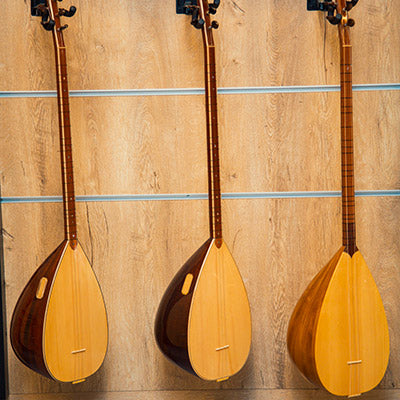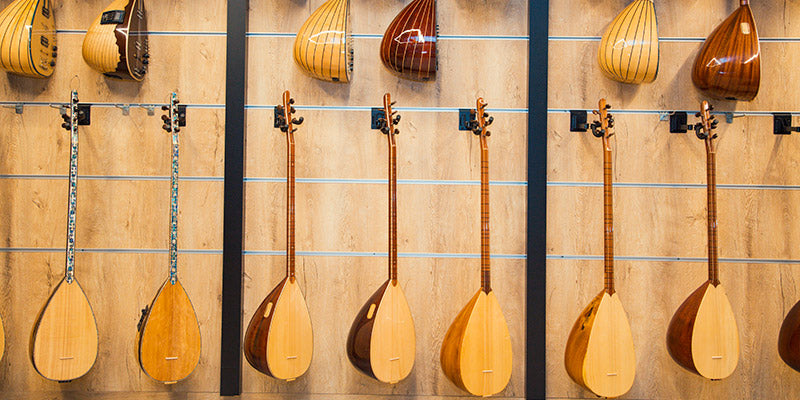How To Tune A Turkish Long Neck Saz
About A Turkish Long Neck Saz
In almost every region of Turkish folk music, the most commonly used instrument is a seven and nine stringed, wooden string instrument with a width of about two octaves played with a plectrum. It is estimated that the word Long Neck Saz was first used in the 18th century. The name of the instrument is thought to be inspired by the connection of the curtains and wires on the handle. The most used types of long neck saz are more than one type; cura, collapse, dombra, two-wire and tanbur. The tuning pattern varies greatly depending on the region in which it is performed.
The long neck saz consists of three main parts; boat, chest, handle. The boat part is usually made of mulberry tree. However, in addition to mulberry tree, juniper, chestnut, walnut, hornbeam is also made from trees. The chest is made of spruce and the stem is made of hornbeam, white hornbeam or juniper.
The smallest and thinnest sound instrument of the long neck saz family is Cura. Tanbur is a bit bigger than Cura and it gives an octave thick sound than Cura. "Divan Sazı" is the thickest instrument of the long neck saz family. It gives an octave thick sound relative to the tanbur.


How To Tune A Turkish Long Neck Saz
We need to know which auger is connected to which wire in order to be able to make the long handle (black pattern) binding accordion.
In long shank bonding, the wires are generally tuned to the ground pattern:
• La (lower wire)
• Re (Middle Wire)
• Left (Top Wire)
Note names are used for reference only. The reference notes are used only to know the difference in sound between the wires (Bottom, Middle, Top). The decision sound is indicated before the binding is tuned. After specifying the decision sound, the wires are tuned according to the decision sound. The decision is made according to the voice of the artist, the voice, the binding, the ear, and other situations.
Also make sure that the environment is quiet when tuning the long neck saz, and then try to tune your device starting with the desired wire group. Continue until the letter appears on the device for the desired decision.
(lower wire - middle wire - upper wire) > respectively.
Bottom wires: B or C
Center wires: E or F
Upper wires: A or B


Advice for Beginners
The person who plays the long neck saz must determine the style of music he will play and decide which long neck saz he will use, the person who will play the long neck saz should know and decide on the long handle and the short handle, but it will be healthier for the beginners to start playing with the long handle.
In this video we explain How To Tune A Turkish Long Neck Saz






Hallo,
Ja, Sie können es mit einem Kapodaster als kurzen Griff verwenden. Sie können ein kurzes Hals-Tuning durchführen
Hallo, kann ich aus meiner Langhals Saz auch eine Kurzhals Saz machen, wenn ich einen Kapodaster benutze?
Wie muss ich die Saz dann stimmen ?
hello i have a Cura but i dont know how to tune it could you tell me how please? what are yhe notes from down to up.thanks
Thank you for the article it really interested me.
It was a very informative article. Thank you so much.
Leave a comment